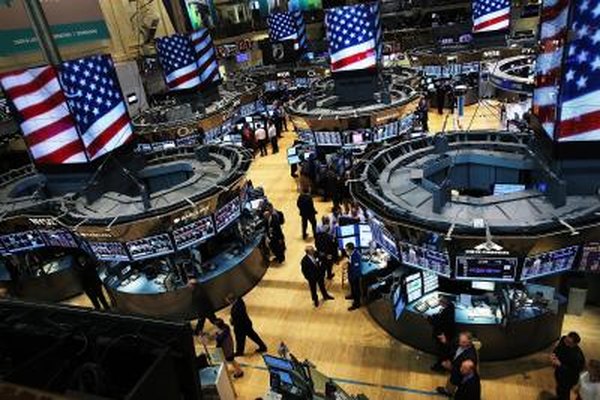What Does Bid Size Mean?
There is more to stock pricing information than just the last trading price.
Spencer Platt/Getty Images News/Getty Images
As you step up to more advanced trading strategies, or if you need to move a large number of shares, you start to think about the volume of market activity as well as prices. The bid and ask prices quoted for different securities show where traders want to buy and sell, and the volume or size associated with those prices show the strength of that conviction.
Bid and Ask Prices
For every type of security -- stocks, options, bonds and futures -- traded in the markets, you will find a bid price and an ask price. The bid price is the highest value at which a market participant has placed an order to buy a security. The ask price is the lowest price offered to sell the same security. The current bid and ask prices for a stock -- this applies to all security types, using stocks as the example here -- constantly change as offers to buy and sell are matched by other orders coming into the market. On both the bid and ask sides of a stock price are pending orders at different prices that are triggered if the market price moves to the value set on a pending order.
Order Size
Along with the price to buy or sell, every order includes the number of shares the trader will buy or sell at that price. So an offer to buy 500 shares for $51 per share is a price bid with a size of 500. If the open order to buy at $51 is the highest price on any order entered, $51 would be the current bid price showing on the price screen of your brokerage account. The size of 500 shares means you could sell at least that many shares for the bid price.
Pricing Data
With a regular brokerage account, the price information you see is probably limited to the current bid and ask prices for a stock, and possibly the size data for those two prices, too. More advanced price data will show what is called depth of market, or level 2 pricing, which shows the line-up of prices behind the current bid and ask prices. With DOM information, you see prices stacked above the ask price along with the number of shares offered at each price. On the bid side, orders are shown moving down in price, with the number of shares attached to the orders at each price.
Bid Size Implications
The bid size can affect you if you want to sell shares of stock. For example, if you see a bid of $51 for 500 shares, and you enter an order to sell 1,000 shares, you may not get filled at the $51 price. Since your order size is bigger, the fill price might drop down to a level where there is a bid for at least the 1,000 shares you are selling. Another factor is the total size of the orders on the bid and ask sides of the depth of market price data. If there are more shares listed on either the bid or ask the side, the imbalance can be an indication of the next directional move for the stock.
References
Writer Bio
Tim Plaehn has been writing financial, investment and trading articles and blogs since 2007. His work has appeared online at Seeking Alpha, Marketwatch.com and various other websites. Plaehn has a bachelor's degree in mathematics from the U.S. Air Force Academy.

